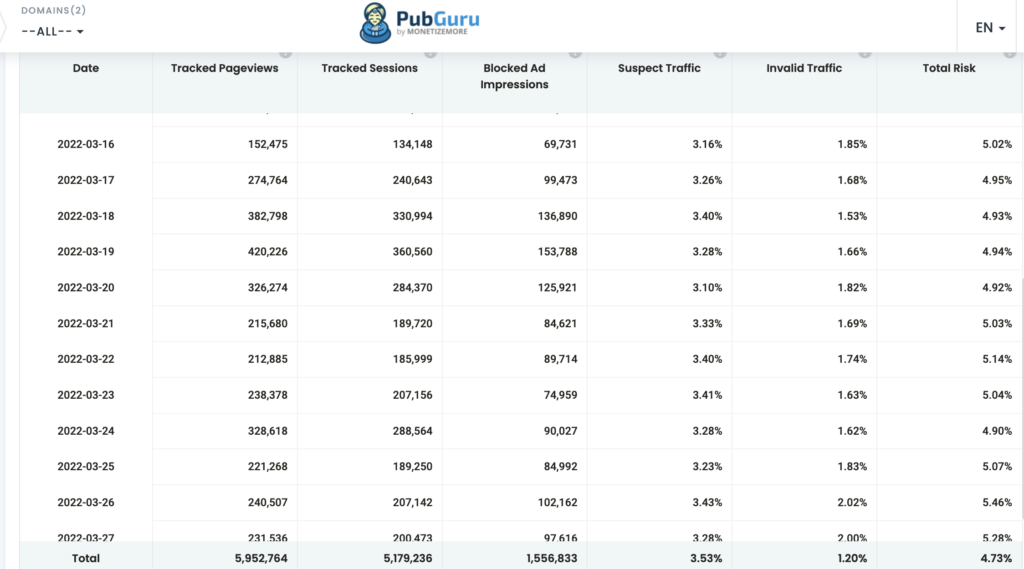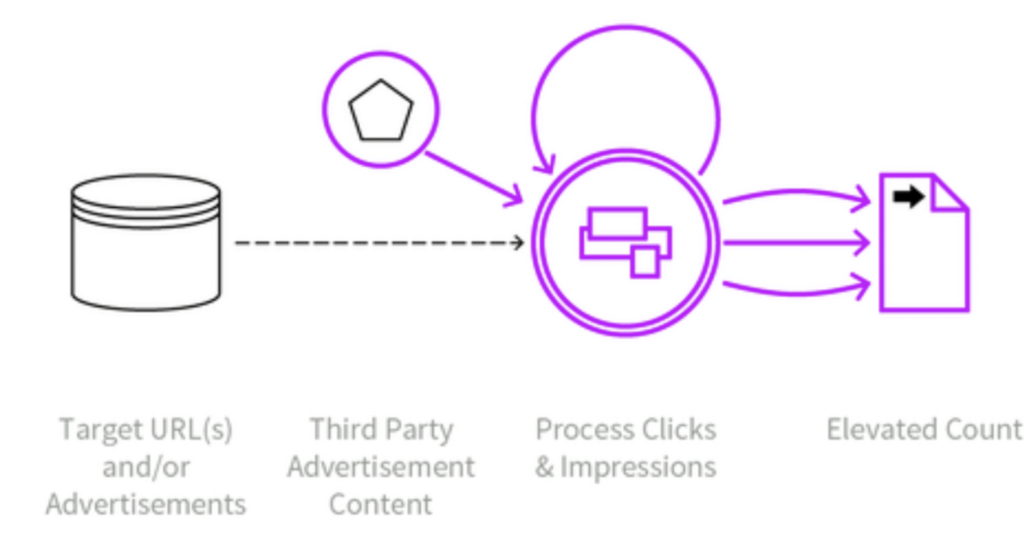Are you concerned about click fraud? You should be! It’s a billion-dollar problem that is only going to get worse. When someone or something clicks on your ads without intending to buy the product, you’ll still be able to get a commission out of it, but if advertisers discover click fraud, they won’t be happy about it.
Ignoring invalid traffic and not taking action on it is only going to make things worse. But don’t worry, we’ve got some effective strategies and tools to help you out.
The best thing you can do is to bot-proof your site. You need to integrate a sustainable & result-driven IVT detection & protection system. The elimination of bot-driven click fraud will improve your reputation with current and future advertisers who are willing to bid on your ad inventory.
You will save money in multiple ways by removing invalid traffic, including limiting your exposure to DDoS attacks, revenue clawbacks, reducing your Content Delivery Network bill, and no more AdSense bans.
In this blog post, we will go through what a click fraud attack will look like, the problems IVT can cause, how you can bot-proof your website, and how MonetizeMore’s Traffic Cop can get rid of all digital ad fraud variants on your site for good. Keep reading to find out more!
What is Click Fraud?
Click fraud is another variant of ad fraud where bots or people keep clicking on PPC ads with no intention of converting, buying, or subscribing to the product or service. It gives a false impression that lots of customers are clicking on the brand’s ad. Click fraud pseudo-inflates the publisher’s ad revenue but in the case of the advertiser, it crushes their ad spend budget increasing their cost per lead.
Over the past few years, ad spending online has crossed over $300 billion with click fraud burning millions of dollars for advertisers each year with one in five ad clicks being fraudulent.
Regardless of whether your site focuses on medical, business, or news, implementing click fraud & IVT protection is a must to save dollars.
Based on statistics gathered by PPC Protect, which analyzed over a billion ad clicks, the results shown in the Global PPC Click Fraud Report showed that 38% on display ad campaigns are fraudulent, as well as 18% on CTV campaigns and 12% of search clicks.
In the report, click fraud was even predicted to increase by 13% year over year, driven in large part by CTVs. In this case, bots watch and click on YouTube ads and other VAST platforms giving a false impression that human viewers are watching these videos. In 2021, connected TV ads were becoming more popular making it another lucrative target for fraudsters.
Click fraud detection & protection is the blue pill to avoid losing ad money to bots and cybercriminals.
Who’s responsible for click fraud and why?
The perpetrators of click fraud aren’t always hackers; oftentimes, it’s competitors. Companies often encourage their employees to click competitor ads or hire low-wage workers to click on competitor ads on their behalf. The risk of click fraud affects publishers as well since it might damage their reputation and relationship with advertisers.
Lots of times, we’ve observed suspicious traffic sources as the publisher’s competitors who would relentlessly click on the ads displayed on the publisher’s website.
Despite this potentially boosting revenue for the publisher in the short term, eventually, it could seem as if the publisher is intentionally committing click fraud since the advertiser is paying the publisher for these impressions without even getting real conversions. Consequently, many advertisers and brands are no longer willing to spend money on publishers’ ad inventory with click fraud on the rise. There are a lot of problems involved, and the likelihood of losing the majority of your ad space bidders to IVT makes click fraud an important consideration.
What makes a click fraud attack tick?
So how do click fraud attacks work? These attacks are committed either manually or via automated bot tools.
Let’s say someone simply clicks on your ad multiple times. While this may seem harmless & ineffective, what if twenty more people keep tapping on a $10 PPC ad ten times a day. That’s still going to cost advertisers $1000 a day and more than $3000 a month. This is enough to drain the brand’s advertising budgets and switch to other publishers who use IVT protection tools with legit traffic coming in their sites.
It is more common for bots or botnet networks to keep tapping on targeted website’s ads. This is either done extremely fast manually or via automated tools which temporarily pseudo-inflates the publisher’s ad revenue for a while.
It is only a matter of time before these bots become more sophisticated, harder to stop, and impossible to track.
Common click fraud protection strategies
The best practices advertisers use to combat click fraud are outlined below.
- They need to partner with reliable and trustworthy ad networks and publishers who invest in bot-killing invalid traffic detection & mitigation tools.
- By only running their ads in countries less prone to click fraud, they can limit their exposure to invalid traffic.
- They always audit and analyze their ad campaigns to avoid or stop any ad spend rise anomalies.
For publishers, detecting and protecting your sites from click fraud is more intricate and they’ll need to subscribe to IVT protection solutions or plugins.
In order to find out if your site’s been hit by click fraud, you need to monitor these variables:
- Click Timestamps: Check if a lot of clicks buzzed in a short period of time.
- Action Timestamps: How quickly someone or something enters the website and clicks on the ad. What are they actually doing on your site?
- IP Address: Check if a massive number of clicks are coming from the same IP address or similar IP addresses.
However, as mentioned above, bots have become increasingly sophisticated and have even fooled Google webmasters who monitor each and every variable diligently. Some businesses even use more than half a million dedicated IPs to make sure their bots aren’t filtered out via advanced IP filters.
How Traffic Cop has protected over 360 publishers & their advertisers from Click Fraud

MonetizeMore’s Traffic Cop is a SaaS-based invalid traffic detection and protection solution that defends your website from GIVT, SIVT, and click fraud bots. Traffic Cop checks each and every request to your website in real-time & is easily able to detect whether the visitor is a bot or human within seconds.
Once you’ve signed up for Traffic Cop you’ll be able to access the dashboard where you can check out your own personalized Traffic Quality, Ad Stacking, and Content Policy reports. Invalid Traffic is measured and blocked by default and you can even set your own rules to customize the reports and you can easily monitor your traffic in real-time.
Investing in a publisher’s ad inventory is always a safe investment with Legit Traffic, as it enhances the credibility of the publisher. Over 360+ publishers are satisfied with Traffic Cop’s invalid traffic detection with now only clean and legit traffic being sent to their advertisers.
source https://www.monetizemore.com/blog/click-fraud-101-should-publishers-be-worried/





0 Comments